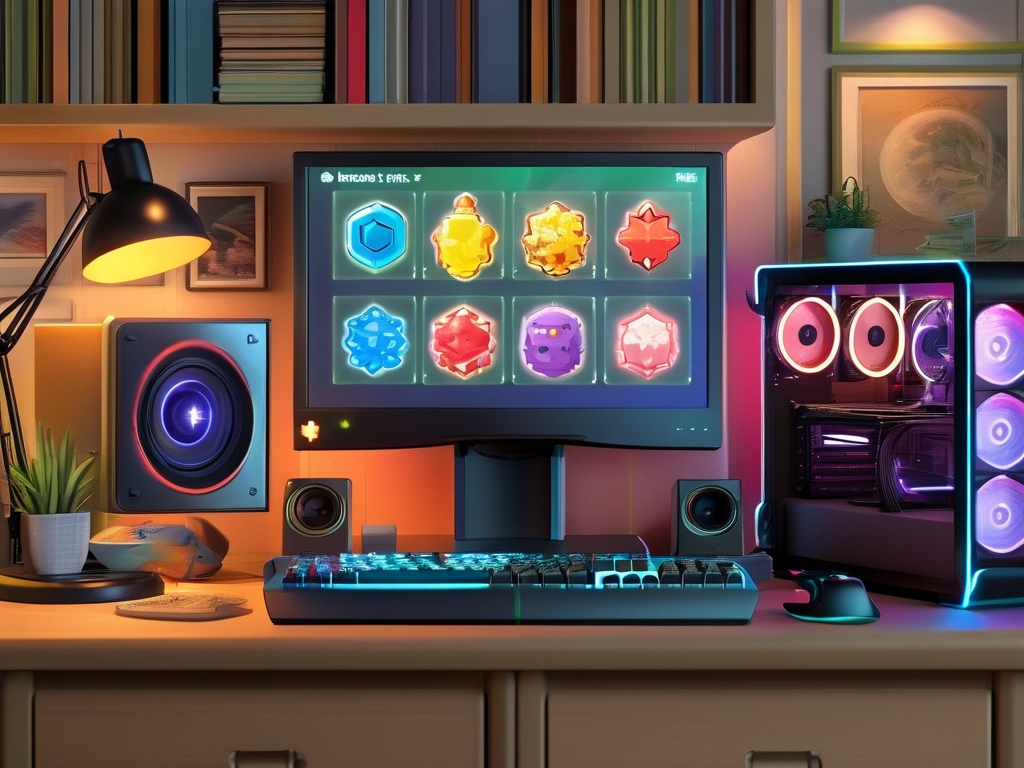Embedded game programming represents a unique intersection of software development, hardware optimization, and creative design. Unlike traditional game development, which often targets high-end PCs or consoles, embedded systems impose strict constraints on resources such as processing power, memory, and energy consumption. This field has grown significantly with the rise of portable gaming devices, arcade machines, and even smart toys, demanding developers to innovate within tight technical boundaries.
The Challenges of Embedded Game Development
- Hardware Limitations: Embedded systems, by nature, prioritize efficiency over raw power. Developers must work with microcontrollers or low-power processors, limited RAM, and minimal storage. For example, a handheld gaming device might use a 32-bit ARM processor with only 256KB of RAM, requiring code to be lightweight and optimized.
- Real-Time Performance: Games demand consistent frame rates and responsive controls. Embedded systems often lack the luxury of multi-core processors or advanced GPUs, forcing programmers to write highly efficient algorithms. Techniques like fixed-point arithmetic (to avoid floating-point overhead) and manual memory management become critical.
- Power Efficiency: Battery-powered devices, such as VR controllers or portable consoles, require developers to balance performance with energy consumption. Unoptimized code can drain batteries quickly, ruining the user experience.
Key Technical Considerations
1. Low-Level Programming
Embedded game development often relies on languages like C or C++ for direct hardware access. Assembly language might even be used for performance-critical routines. For example, the Nintendo Game Boy Advance famously used a mix of C and ARM assembly to maximize its 16.8 MHz CPU. Developers must also interface with hardware peripherals, such as displays, input buttons, or accelerometers, without the abstraction layers found in mainstream platforms.

2. Hardware Abstraction Layers (HAL)
To maintain portability across devices, embedded game engines often include HALs. These layers isolate hardware-specific code, allowing games to run on different systems with minimal changes. For instance, a game designed for a Raspberry Pi-based arcade cabinet could adapt to an ESP32-powered handheld by swapping HAL components.
3. Cross-Platform Optimization
Unlike PC games, which scale with hardware, embedded games must target fixed specifications. Developers use profiling tools to identify bottlenecks, such as excessive draw calls or unoptimized collision detection. Compression algorithms for assets (e.g., texture atlases) and procedural generation techniques help reduce memory usage.
4. Testing and Debugging
Debugging embedded games is notoriously challenging. Without a full-fledged operating system, developers rely on hardware debuggers, LED indicators, or serial output for logging. Emulators are often used during early development, but final testing must occur on the actual device to catch hardware-specific issues.
Case Study: The Rise of Retro Gaming Consoles
Embedded game programming has fueled the retro gaming revival. Devices like the PocketGo or Anbernic RG351 use low-cost ARM processors to emulate classic consoles. Developers port open-source emulators (e.g., RetroArch) to these platforms, optimizing them for performance. For example, the PlayStation 1 emulator on the RG351 achieves smooth gameplay by leveraging hardware-accelerated rendering and overclocking the CPU within thermal limits.
The Role of Modern Tools
While embedded development is rooted in low-level coding, modern tools have streamlined workflows:

- Unity and Unreal Engine: These engines now support embedded platforms like Raspberry Pi, offering optimized rendering pipelines.
- RTOS Integration: Real-time operating systems (e.g., FreeRTOS) help manage tasks like input polling and audio playback deterministically.
- AI-Driven Optimization: Machine learning models can automatically refactor code for size or speed, a boon for memory-constrained systems.
Future Trends
- AI in Embedded Games: TinyML frameworks enable AI features (e.g., gesture recognition) on microcontrollers, opening doors for smarter interactive toys.
- Edge Computing: Cloud-offloading techniques could let embedded devices handle complex physics or AI by delegating tasks to servers.
- Open-Source Hardware: Projects like Arduino and ESP32 are democratizing embedded game development, allowing indie creators to prototype custom consoles.
Embedded game programming is a demanding yet rewarding discipline that blends technical rigor with creative problem-solving. As hardware evolves—think RISC-V processors or energy-efficient GPUs—the possibilities for embedded gaming will expand. Developers who master this niche will play a pivotal role in shaping the future of interactive entertainment, from educational gadgets to immersive VR peripherals. By embracing constraints as opportunities, they prove that innovation thrives even within the tightest boundaries.









